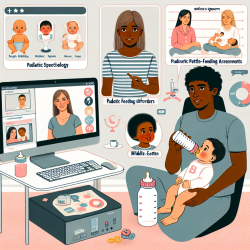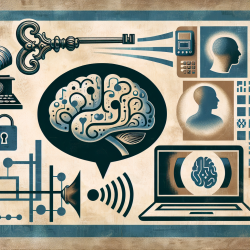Introduction
The realm of speech-language pathology is continuously evolving, driven by groundbreaking research and the integration of innovative methodologies. One such area of research that has garnered attention is the investigation of episodes of lucidity (ELs) in Alzheimer's disease and related dementias (AD/ADRD). The recent study titled "Toward harmonization of strategies for investigating lucidity in AD/ADRD: A preliminary research framework" provides a foundational framework for understanding these episodes. Although the study primarily focuses on AD/ADRD, the insights can be extrapolated to enhance therapeutic approaches in other domains, including online therapy for children.
Understanding Episodes of Lucidity
Episodes of lucidity are characterized by unexpected and spontaneous returns of cognitive abilities in individuals with advanced neurodegenerative diseases. The study by Gilmore-Bykovskyi et al. (2023) highlights the need for clear definitional criteria and consistent conceptualization to systematically investigate these episodes. By understanding the markers and attributes of ELs, practitioners can develop more effective therapeutic strategies.
Applying Research Insights to Online Therapy
While the study focuses on AD/ADRD, the principles of identifying and operationalizing cognitive shifts can be applied to online therapy for children. Here are some ways practitioners can implement these insights:
- Individualized Assessment: Just as ELs are unique to each individual, children's responses to therapy can vary significantly. Practitioners should adopt a personalized approach, assessing each child's unique strengths and challenges.
- Measurement Strategies: The study emphasizes the importance of using specific measurement strategies to assess markers and attributes. In online therapy, practitioners can utilize digital tools to track progress and identify patterns in children's communication and behavior.
- Temporal Dimensions: Understanding the timing and duration of cognitive shifts is crucial. Practitioners should monitor the frequency and duration of children's engagement and responsiveness during therapy sessions.
- Communication and Language: The study underscores the role of speech, language, and communication in identifying ELs. Online therapy should focus on enhancing these areas, using interactive activities and games to foster language development.
Encouraging Further Research
The preliminary research framework presented by Gilmore-Bykovskyi et al. (2023) is a stepping stone for further investigation into episodes of lucidity. Practitioners are encouraged to engage in continuous research and collaboration to refine therapeutic approaches and improve outcomes for children. By staying informed about the latest research and integrating data-driven insights, practitioners can contribute to the advancement of the field.
Conclusion
The study "Toward harmonization of strategies for investigating lucidity in AD/ADRD: A preliminary research framework" provides valuable insights that can be adapted to enhance online therapy for children. By implementing individualized assessments, utilizing specific measurement strategies, and focusing on communication and language, practitioners can create effective and engaging therapy sessions. To read the original research paper, please follow this link: Toward harmonization of strategies for investigating lucidity in AD/ADRD: A preliminary research framework.










